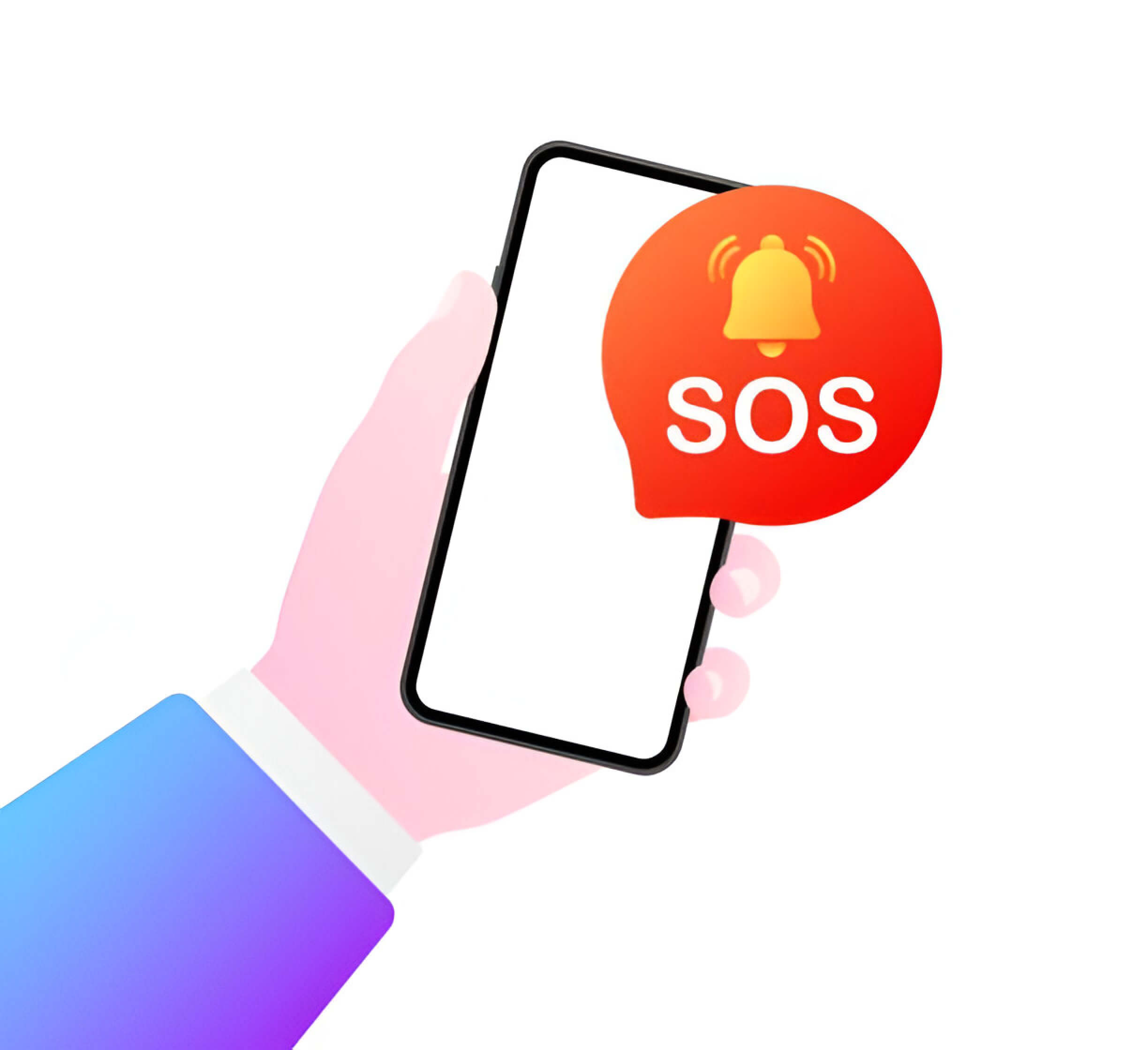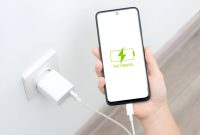SOS mode is a safety feature designed to ensure you can make emergency calls even when your phone has limited or no cellular service. When activated, your device restricts all non-emergency functions, allowing you to contact emergency services only. This mode typically activates automatically in areas with extremely weak or no cellular signal, or when there are issues with your carrier or SIM card.
Common Reasons Your Phone Might Be Stuck in SOS Mode
Several factors can cause your phone to become stuck in SOS mode:
1. Poor network coverage or signal strength
Poor network coverage or signal strength is a common issue that can significantly impact the performance of your mobile device. This problem occurs when your phone struggles to maintain a stable connection to your cellular network provider’s towers. Several factors can contribute to weak signal strength, including:
- Distance from cell towers: The farther you are from a cell tower, the weaker your signal will be.
- Physical obstructions: Buildings, mountains, and other large structures can interfere with signal transmission.
- Network congestion: In densely populated areas or during peak usage times, networks may become overloaded, resulting in reduced signal strength.
- Weather conditions: Severe weather, such as thunderstorms or heavy cloud cover, can temporarily affect signal quality.
- Indoor locations: Signals often have difficulty penetrating thick walls or reaching basement areas.
To improve your signal strength, try moving to a different location, stepping outside, or positioning yourself near a window. Additionally, ensuring your phone’s software is up-to-date and restarting your device can sometimes resolve signal issues. If problems persist, contact your network provider to discuss potential solutions or network improvements in your area.
2. SIM card issues, such as damage or improper insertion
SIM card problems can significantly impact your phone’s ability to connect to cellular networks and make calls. These issues often stem from physical damage to the card or improper insertion into the device. A damaged SIM card may have visible scratches, cracks, or bent corners, which can prevent proper contact with the phone’s internal reader. In some cases, exposure to extreme temperatures or moisture can also cause SIM card malfunction.
Improper insertion is another common culprit. If the SIM card is not correctly seated in its designated slot, the phone may fail to recognize it. This can happen if the card is inserted upside down, at an angle, or not fully pushed into place. Some phones require the use of a SIM tray, which must be properly aligned and securely closed.
To troubleshoot SIM card issues, first power off your device and carefully remove the SIM card. Inspect it for any visible damage and clean the gold contacts gently with a soft, dry cloth. When reinserting the SIM, ensure it’s properly aligned and fully seated in its slot. If problems persist, consider contacting your mobile service provider for a replacement SIM card, as they can deteriorate over time.
3. Carrier-related problems, including network outages or account suspensions
Carrier-related issues can significantly impact your ability to send and receive text messages. These problems often stem from factors beyond your control but can be just as frustrating as device-specific issues. Network outages, for instance, can occur due to severe weather conditions, equipment failures, or scheduled maintenance. During these periods, your carrier’s infrastructure may be unable to process text messages, resulting in delayed or undelivered messages.
Account suspensions are another potential cause of texting difficulties. If your account has been suspended due to non-payment, exceeding data limits, or violating the carrier’s terms of service, you may lose the ability to send or receive texts. In such cases, contacting your carrier’s customer support is crucial to resolve the issue and restore your messaging capabilities.
Additionally, some carriers may experience temporary glitches in their systems that affect text messaging services. These can include issues with message routing, SMS gateways, or other technical components of the carrier’s network. While these problems are usually resolved quickly, they can cause temporary disruptions in your ability to send or receive messages.
To determine if carrier-related problems are affecting your texting, check your carrier’s website or social media channels for any reported outages or service disruptions. You can also contact their customer support for more information and potential solutions to your texting issues.
4. Software glitches or outdated operating systems

Software glitches and outdated operating systems can significantly impact your computer’s performance and security. When software isn’t regularly updated, it may contain vulnerabilities that hackers can exploit. Additionally, older operating systems may lack crucial security features, making your device more susceptible to cyber threats.
Glitches in software can cause unexpected crashes, slow performance, or even data loss. These issues often arise from conflicts between different programs or incompatibilities with hardware components. Regularly updating your software and operating system helps resolve these problems and ensures smoother operation.
Outdated operating systems may also struggle to support newer applications, limiting your ability to use the latest software tools. This can hinder productivity and prevent you from accessing important features or services.
To mitigate these risks, it’s essential to:
- Enable automatic updates for your operating system and software
- Regularly check for manual updates that may not be pushed automatically
- Consider upgrading to a newer operating system if your current one is no longer supported
- Uninstall unnecessary software to reduce potential conflicts
- Keep your antivirus software up-to-date for added protection
By staying vigilant and maintaining your software and operating system, you can ensure a more stable, secure, and efficient computing experience.
5. Hardware malfunctions, particularly with the antenna or cellular modem
Hardware malfunctions can significantly impact the performance of your cellular trail camera, with issues related to the antenna or cellular modem being particularly problematic. The antenna is responsible for transmitting and receiving signals, while the cellular modem enables communication with the cellular network. When either of these components fails, it can result in poor or no connectivity.
Common antenna issues include physical damage, loose connections, or corrosion. These problems can lead to weak signal reception or complete signal loss. Similarly, cellular modem malfunctions may manifest as an inability to connect to the network, frequent disconnections, or slow data transfer rates.
To diagnose hardware problems, start by visually inspecting the antenna for any visible damage or loose connections. If possible, try replacing the antenna with a known working one to isolate the issue. For cellular modem problems, check if the device is recognized by the camera’s firmware and ensure that all connections are secure.
If you suspect a hardware malfunction, it’s best to contact the manufacturer’s support team or consider sending the device for professional repair. Attempting to fix complex hardware issues without proper knowledge and tools may cause further damage to your cellular trail camera.
Step-by-Step Guide To Fix Troubleshooting a Phone Stuck in SOS Mode
- Check your network coverage: Move to an area with better signal strength.
- Toggle Airplane Mode: Turn it on and off to force your phone to reconnect to the network.
- Check your SIM card: Ensure it’s properly inserted and undamaged.
- Update your phone’s software: Install any available system updates.
- Reset network settings: This can resolve carrier-related issues.
- Contact your service provider: They can check for account problems or network outages.
- Perform a factory reset: As a last resort, reset your device to its original settings.
If these steps don’t resolve the issue, your phone may require professional repair or replacement.










